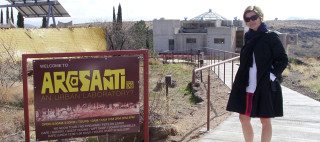Suburbia as Testbed

Can the suburban become an intelligent testbed for new urban solutions and innovation?
It is often claimed that the peri-urban is suffering from lack of interest and has become a victim of coincidental interventions. With reference to Peter Blake’s book Gods Own Junkyard, areas of fragmented fabric, conventional housing schemes, heavy infrastructure, big boxes and waste dumps more than experimental practices comes to mind.[1] A central question is: can the suburban become an intelligent testbed for new urban solutions and innovation?
The conference Future of Suburbia had a liberating take on this question, suggesting that: “In the future, suburbs will become the frontiers of innovative land-use, built within the framework of permanent flexibility that is able to adapt to new economic opportunities, demographic shifts or new technologies.“
During the conference several very clear positions emerged. First, a closer look might suggest it is not only about the future. One can argue that the peri-urban has played a role in urban development and growth throughout history.[2] The periphery of the city has always been an important provider of urban necessities in terms of constituting the confluence between the rural and the urban. Investigating the potentials of the peri-urban naturally brings up historical examples like the Garden City movement, principles of the Linear City, English New Towns among others.
Second, in spite of a strong consensus on the compact city model, cities are steadily continuing to sprawl. The need to leave prejudice behind and broaden up our idea of what a city is, ha become obvious. The compact city model seems to be insufficient in handling sprawl as the suburb is for many people the preferred way of living. As professor in landscape architecture Alan Berger argues, “one [urban] form is not superior to the other”. There is a risk of being locked in between polarities. And even more controversial, could one claim that the suburban condition is a necessity? Several examples presented at the conference approached the questions about how to understand the experimental potential within the suburban today. On-going testing of new modes of transportation, urban extensions and ecological experiments, all endeavor to take the advantages of the suburban/peri-urban conditions.
In 1970 the Italian architect and environmental pioneer, Paolo Soleri, launched an urban experiment in the Arizona high desert, two hours car ride outside Phoenix. Arcosanti was meant to offer an alternative to urban sprawl and test theories on compact city design. The goal was as “to scrap and reinvent the American dream in terms, which are coherent with the human biospheric reality”.[3] A combination of being at the very forefront of environmental thinking and a wide range of other factors made the experiment much smaller than planned. Today 50 people live here as opposed to the 50 000 planned inhabitants. A detached location from the existing city was important when building an urban laboratory. Arcosanti serves as an example on how areas at the perimeter of cities can become receptors of innovative, utopian and experimental urban projects.
Back to the conference, Cambridge and MiT; our experience of the Boston weather changing from sun and 17 degrees Celsius to snow and cold during the days of the conference underlines the necessity for seeking new solutions. Unstable weather conditions caused by climate change will change our living conditions. Unavoidable challenges ahead calls for rethinking the complex relationship between urbanism and landscape. A core question to the experimental dimension is: “How do we ensure that flexible land tenure models permit innovation and enable experimental economies, programs and building?”[4]
An echo from Arcosanti appeared at the conference, although a very different one. The CITE city lab is an artificial full-scale city to be built in the Arizona desert, close to the City of Hobbs. CITE will function as a test field for new urban and suburban technological solutions before they are implemented in real cities. In contrast to Arcosanti , the plan is not to have people living in the physical structures; if people are needed they will be transported in and out. A ghost city in the desert testing solutions for urban life sounds awkward. However, time will show whether this project will be meaningful or not.
Reading, understanding and acknowledging the suburbs might not be the hardest part. The hardest part is how to create new solutions. The conference demonstrated that suburbia has a great potential, but we “still haven’t found what we are looking for”.[5] The relatively unrestricted landscapes of the peri-urban suburbs can facilitate experimentation with urban form that may help us develop future urban patterns. Alan Berger suggests that ideologies be avoided and introduces systemic thinking to find new trajectories – including suburban models as indispensable part of the future city.
[1] Peter Blake. God’s own junkyard; the planned deterioration of America’s landscape. New York, Holt, Rinehart and Winston (1964)
[2] Robert Bruegmann, Sprawl : a compact history. University of Chicago Press (2005).
[3] From exhibition texts at Arcosanti (Visited 2010).
[4] Future of Suburbia, CAU, Center for Advanced Urbanism, MiT (2016).
[5] U2. I still haven’t found What I’m looking for (1987).




I guess Masdar City in UAE is another example of a peri urban testbed.